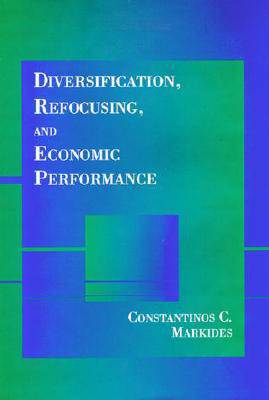
- Afhalen na 1 uur in een winkel met voorraad
- Gratis thuislevering in België vanaf € 30
- Ruim aanbod met 7 miljoen producten
- Afhalen na 1 uur in een winkel met voorraad
- Gratis thuislevering in België vanaf € 30
- Ruim aanbod met 7 miljoen producten
Omschrijving
During the 1980s a dramatic change in the evolution of the modern corporation took place. The phenomenon, which has been labelled refocusing, de-diversifying, de-conglomerating, or simply getting back to basics, has changed the terrain of American business. Diversification, Refocusing, and Economic Performance empirically examines the causes and consequences of this phenomenon from a corporate strategy perspective, uncovering the full scope and effects of corporate refocusing, its strategic logic, and the resultant managerial implications. Two key findings are that every firm has its own limit for diversification, beyond which profits will decline, and that there are certain similarities among those companies who choose to refocus. Starting right after the Second World War, many companies diversified widely, primarily in areas unrelated to their core businesses. In the 1980s, however, as corporate acquisitions and hostile takeovers ran rampant, this trend toward diversification and conglomeration began to reverse. Today, there is ample evidence that corporate managers are responding in significant numbers to takeover threats by shedding unlucrative divisions and subsidiaries and concentrating on boosting the core product lines that have been their company's bread-and-butter. Drawing on a data set of 250 of the top Fortune 500 companies, Constantinos Markides measures the extent of the refocusing phenomenon, proposes reasons for its current popularity, delineates the characteristics of firms that are refocusing, and discusses the effects of refocusing on company market value, profitability, and organizational structure.
Specificaties
Betrokkenen
- Auteur(s):
- Uitgeverij:
Inhoud
- Aantal bladzijden:
- 219
- Taal:
- Engels
- Reeks:
Eigenschappen
- Productcode (EAN):
- 9780262133111
- Verschijningsdatum:
- 11/01/1996
- Uitvoering:
- Hardcover
- Formaat:
- Genaaid
- Afmetingen:
- 159 mm x 235 mm
- Gewicht:
- 485 g

Alleen bij Standaard Boekhandel
Beoordelingen
We publiceren alleen reviews die voldoen aan de voorwaarden voor reviews. Bekijk onze voorwaarden voor reviews.












